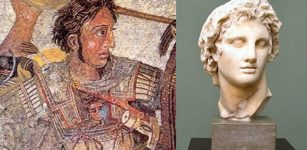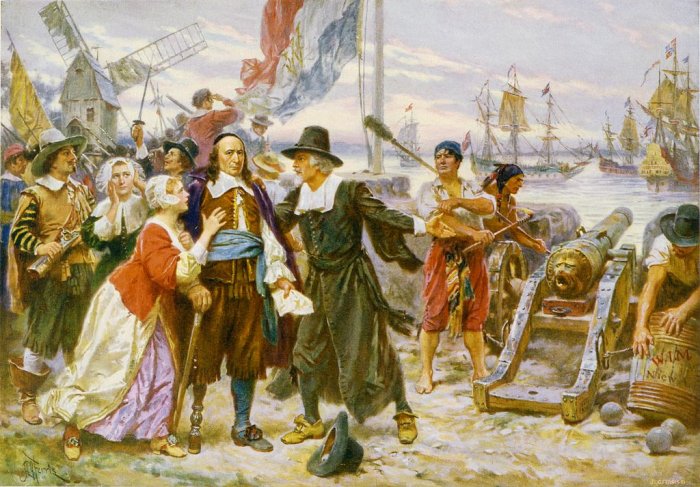New York Was Once Called New Amsterdam – History Behind The Change Of Name
AncientPages.com - Did you know that New York was once called New Amsterdam?
Today, it’s difficult to imagine that New York could ever have had another name, but it was not so long ago that the city was renamed. New York was once called New Amsterdam and it was the capital of New Netherland.
New York’s name history can be traced to a time during the 17th century when Britain, France and Netherlands all struggled to expand their territories and establish more colonies.
Though Britain and France were rivals, they could still co-operate and form an alliance against their common enemy - the Netherlands, a small country that for 80 years fought for independence and now started to conquer the world.
Image credit: Museum of the City of New York
The Netherlands became more and more powerful. One of the goals was to set up colonies in North America.
The first recorded exploration by the Dutch of the area around what is now called New York Bay was in 1609 with the voyage of the ship Halve Maen.
In 1626, Dutch governor Peter Minuit formally purchased Manhattan from the local Indian tribe. According to a legend, the Manhattans–Indians of Algonquian linguistic stock agreed to give up the island in exchange for trinkets valued at only $24.
See also:
The Name Of America Used For The First Time On World Map – On Apr 25, 1507
More Fascinating Ancient History Facts
At the southern tip of Manhattan Island, a Dutch settlement was established. It was considered a good strategic location. A fort was built and the city served as the seat of the colonial government in New Netherland.
It did not take long before a conflict broke out between the Dutch settlements and the Indians who were ignorant of European customs of property and contracts. The Dutch and Indian conflict resulted in the death of more than 1,000 Indians and settlers.
In 1664, New Amsterdam passed to English control, and English and Dutch settlers lived together peacefully.
On September 8, 1664, New Amsterdam was renamed to New York
The Fall of New Amsterdam, by Jean Leon Gerome Ferris. Peter Stuyvesant (left of center, with wooden leg) stands on shore among residents of New Amsterdam who plead with him not to fire on the English warships. Image credit: United States Library of Congress
The English had renamed the Colony the Province of New York, after the king's brother James, Duke of York and on June 12, 1665 appointed Thomas Willett the first of the Mayors of New York Town. The city grew northward, and remained the largest and most important city in the Province of New York and became the third largest in the British Empire after London and Philadelphia.
Some years later, in 1673, the Dutch managed to regain control of their settlement, but not for long. The following year, they lost the city again and New York was returned to the Englishmen.
After the American Revolution, the Treaty Of Paris was ratified and New York became the first capital of the United States.
Copyright © AncientPages.com All rights reserved. This material may not be published, broadcast, rewritten or redistributed in whole or part without the express written permission of AncientPages.com
Expand for referencesMore From Ancient Pages
-
 Robots Guarded Buddha’s Relics In Ancient India – Legend Tells
Featured Stories | Jun 28, 2019
Robots Guarded Buddha’s Relics In Ancient India – Legend Tells
Featured Stories | Jun 28, 2019 -
 Unique Statue Of Warrior Wearing A Phrygian Cap Accidently Discovered By Dutch Fishermen
Archaeology | Aug 2, 2022
Unique Statue Of Warrior Wearing A Phrygian Cap Accidently Discovered By Dutch Fishermen
Archaeology | Aug 2, 2022 -
 Legendary Furies – Angry And Monstrous Women Of The Underworld
Featured Stories | Dec 23, 2014
Legendary Furies – Angry And Monstrous Women Of The Underworld
Featured Stories | Dec 23, 2014 -
 Mesopotamian God Nabu Inscribed The Human Fates Determined By The Gods
Featured Stories | Aug 7, 2018
Mesopotamian God Nabu Inscribed The Human Fates Determined By The Gods
Featured Stories | Aug 7, 2018 -
 Huge Megalithic 7,000-Year-Old Site Dolmen Of Guadalperal Emerges From Dry Lake In Spain
Archaeology | Aug 22, 2022
Huge Megalithic 7,000-Year-Old Site Dolmen Of Guadalperal Emerges From Dry Lake In Spain
Archaeology | Aug 22, 2022 -
 Remains of Maurya-Era Wall Discovered In Tilaurakot, Kapilvastu, Nepal
Archaeology | Jun 16, 2022
Remains of Maurya-Era Wall Discovered In Tilaurakot, Kapilvastu, Nepal
Archaeology | Jun 16, 2022 -
 Knights Templar’s Legendary Sword In Stone In Terminillo Mysteriously Disappeared – Where Is It Hidden?
Featured Stories | May 3, 2021
Knights Templar’s Legendary Sword In Stone In Terminillo Mysteriously Disappeared – Where Is It Hidden?
Featured Stories | May 3, 2021 -
 Scientists Can Finally Answer What Bronze Age Daggers Were Used For
Archaeology | Apr 29, 2022
Scientists Can Finally Answer What Bronze Age Daggers Were Used For
Archaeology | Apr 29, 2022 -
 Girl’s Ancient Tooth Solves One Of The Biggest Mysteries Of The Denisovans
Archaeology | May 17, 2022
Girl’s Ancient Tooth Solves One Of The Biggest Mysteries Of The Denisovans
Archaeology | May 17, 2022 -
 7,000-Year-Old Grains Hints At Origin Of Swiss Pile Dwellings
Archaeology | Mar 3, 2022
7,000-Year-Old Grains Hints At Origin Of Swiss Pile Dwellings
Archaeology | Mar 3, 2022 -
 5 Traces Of Ancient Ancestors That Still Exist In All Human Bodies Today
Featured Stories | Jan 23, 2023
5 Traces Of Ancient Ancestors That Still Exist In All Human Bodies Today
Featured Stories | Jan 23, 2023 -
 Were The Bones Of Fallen Battle of Waterloo Soldiers Sold As Fertilizer? – New Study
Archaeology | Jun 18, 2022
Were The Bones Of Fallen Battle of Waterloo Soldiers Sold As Fertilizer? – New Study
Archaeology | Jun 18, 2022 -
 The Enigma Of People And Gods With Horns In Ancient Times
Featured Stories | Nov 7, 2015
The Enigma Of People And Gods With Horns In Ancient Times
Featured Stories | Nov 7, 2015 -
 Final Journey Of Ötzi Iceman: More Clues Found In Frozen Moss
Archaeology | Nov 1, 2019
Final Journey Of Ötzi Iceman: More Clues Found In Frozen Moss
Archaeology | Nov 1, 2019 -
 Has The Mystery Of Bronze Age Tin Been Solved?
Archaeology | Oct 3, 2019
Has The Mystery Of Bronze Age Tin Been Solved?
Archaeology | Oct 3, 2019 -
 Why Didn’t Alexander The Great’s Body Show Signs Of Decomposition For Several Days? A Never-Before Suggested Explanation – From Scientists
Archaeology | Jan 24, 2019
Why Didn’t Alexander The Great’s Body Show Signs Of Decomposition For Several Days? A Never-Before Suggested Explanation – From Scientists
Archaeology | Jan 24, 2019 -
 Fossil Of Prehistoric Saber-Toothed Cat Found In Texas
Fossils | Jun 11, 2024
Fossil Of Prehistoric Saber-Toothed Cat Found In Texas
Fossils | Jun 11, 2024 -
 Danish Royal Sunken Ship Sheds Light On Psychological Warfare In The Middle Ages
Archaeology | Apr 3, 2017
Danish Royal Sunken Ship Sheds Light On Psychological Warfare In The Middle Ages
Archaeology | Apr 3, 2017 -
 Trident: Powerful Religious Symbol Found In Many Ancient Cultures
Ancient Symbols | Dec 4, 2019
Trident: Powerful Religious Symbol Found In Many Ancient Cultures
Ancient Symbols | Dec 4, 2019 -
 Anglo-Irish Explorer Shackleton’s Ship The Quest Found Off Canada’s Coast
Underwater Discoveries | Jun 13, 2024
Anglo-Irish Explorer Shackleton’s Ship The Quest Found Off Canada’s Coast
Underwater Discoveries | Jun 13, 2024


